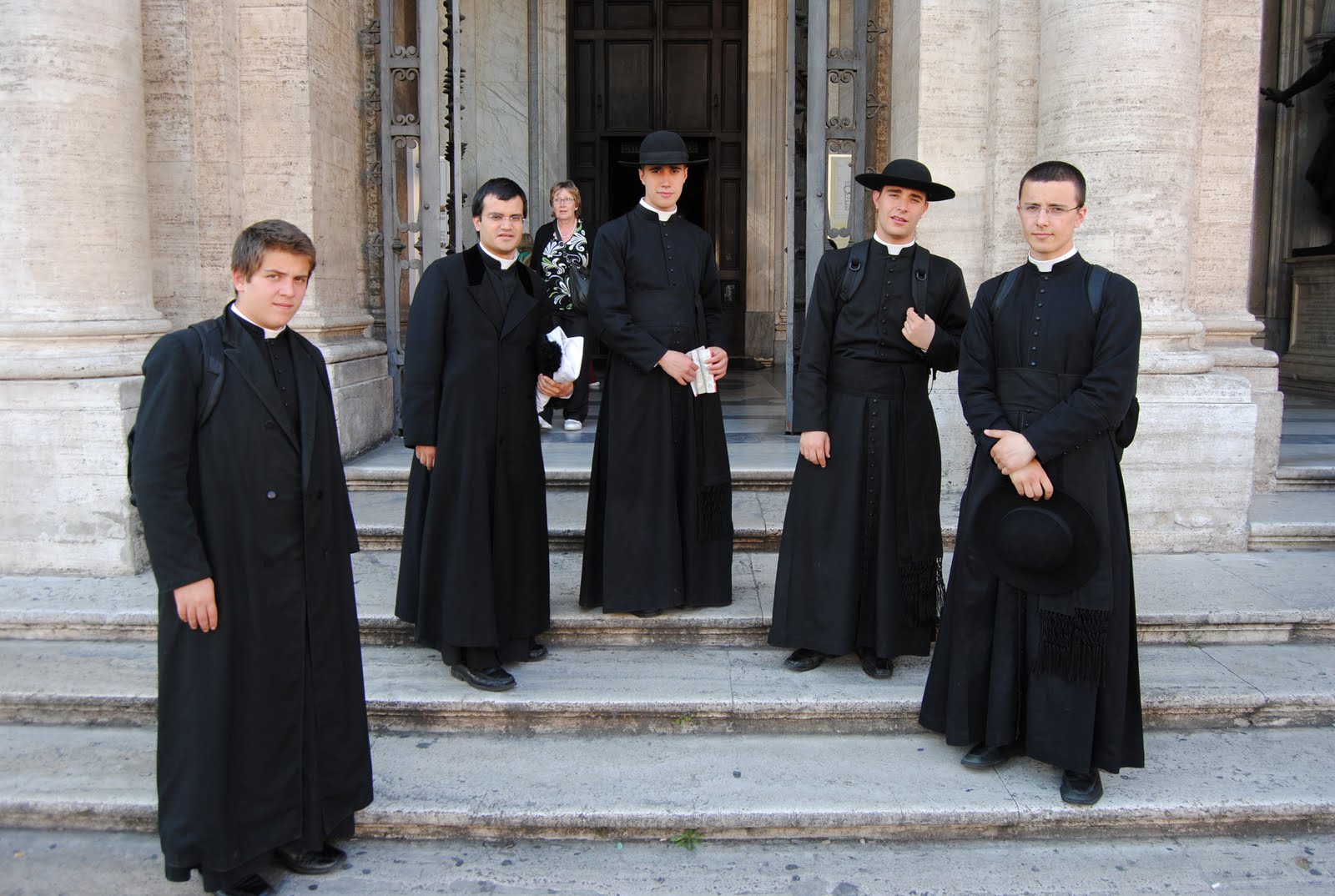I have blogged in the past about the opportunities one has to evangelize in the deep South when wearing the cassock.
My favorite episode was when I stopped at the supermarket to pick up a few items. I was wearing my cassock and Benedictine scapula and as I got to the end of the aisle with the shopping cart two rather large African American ladies came around the corner. One had purple hair, big red framed sunglasses and a jazzy colored top. The other was competing with her in the peacock competition. Both were jabbering away in conversation.
When they came around the corner and saw me both screamed and put their hand to their mouth. Then they started laughing together.
“Are you a real priest?” the first one asked.
“Yes ma’am, I sure am.” I said.
“Why do you dress like that?” said the second, “I think you are looking fabulous!”
“Thanks! If I may say so, I think both of you look pretty fantastic too.”
At that point they both start laughing and number one says to me, “Can I give you a hug?”
“Sure.” So we hugged and I said, “Now tell me where the two of you go to church.”
“We go to Hallelujah Temple” (or whatever it was)
“I knew you loved the Lord Jesus. Well, I do too. Now don’t forget to go to church this Sunday.”
“Oh no sir. We won’t. We never miss.”
Whenever this sort of thing takes place, on the one hand, I’m happy for the chance to evangelize, on the other hand, I’m chagrined to remember Jesus words, “Beware of the scribes who love to wear long robes and be greeted in the marketplace and have the best seats in the synagogue and at banquets.”
Whoops!
Nevertheless, the cassock has some value in presenting a memorable witness. However, there are some grumblers who say the cassock is a sign of affectation among young priests. They suggest that a well dressed priest with cassock and white shirt and cufflinks is more interested in dressing up than living the gospel. I have to admit, sometimes I worry that my fellow Catholic clergy are just a bit too close to the “china tea cup and chasuble” brigade we used to see amongst the Anglo Catholics. Being obsessed with the fine vestments, exquisite altar ware and the beautiful accoutrements of worship can be a bit precious.
Balance is necessary. All the beautiful things that adorn our liturgy are there to give glory to God, and the cassock, when worn by a priest should be a sign of contradiction, an opportunity to witness and a visibly distinctive sign that indicates the priest or religious.
It’s interesting to remember however, that the historical reason the cassock was worn was not as a kind of clerical habit, but out of necessity. For the poor parish priest in France the cassock or “long coat” may have been just about his only garment. In other words, he wore the cassock every day because it was all he had to put on. Therefore it was not only a sign of his priestly status, but a sign of his abject poverty. In Bernanos’ Diary of a Country Priest we see the humble cure’ of the parish pulling on the cassock as his only clothing and dining every day on the most meager diet.
In times of persecution the cassock was a sign of a priest’s identity and he wore it like a black badge of courage. The cardinals, dressed in red, are reminded that they are to be willing to shed their blood as martyrs for the faith.
Priests wearing cassocks in suburban American today could be all that, but the the finely tailored cassock from Gamarelli’s or House of Hansen complete with gold cufflinks and silk fascia can contradict those historic signs
Far be it from me to fuss about such things or judge anyone. I don’t mind what sort of clerical garb a priest wears as long as he is clothed in righteousness and garbed by grace, and I’ve learned that the most humbly dressed friar in a ragged robe can be a fraud and charlatan while a smartly dressed priest in a tailored cassock can be authentically hard working and holy.
Man looks on the outward appearance, but God looks at the heart.







I love the cassock, Father; keep wearing it. I wish more priests did. Actually, I wish all priests did. I have encountered several priests lately who wore civilian clothes and introduced themselves as “Bob” or “Tony” rather than “Father Bob / Tony.” I get maybe doing that when they are out on their day off or at home with family but these priests who were in a formal setting giving talks on matters of religion at a retreat / formation day. That earns them a big thumbs down from me. Honestly, it’s hard to give a priest any credibility when he does that.